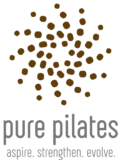We’ve all been told that eating well first thing in the morning is important. But have you ever wondered why exactly? Here’s some insight from one of our instructors, Kim Marian, who has attended several nutrition lectures presented by leading dieticians, including one working with US Olympic athletes.
- Your body has been sleeping and recovering from the day’s activities. It has been running since your last meal (how many hours was that?) and in the morning, it’s running on empty. Breakfast refuels your body from the night-time sleep activities (yes, you burn some calories in your sleep) AND getting your body primed for the day ahead.
- Breakfast turns “on” your metabolic system, the system responsible for creating and processing energy. Skip breakfast and the system remains “off” thinking it won’t be receiving any nutrients to process.
- Adequate protein (20-35 grams) at breakfast has been clinically proven to increase satiety (fullness) all day long. (Reduced cravings throughout the day!) There are lots of good “breakfast” proteins (eggs, Greek yogurt, milk, ground turkey, etc), but why not enjoy a little chicken breast with your pineapple-mango smoothie?
- An ideal breakfast includes lean protein, whole grains, low-fat dairy, and a fruit and/or vegetable. Example: Egg soft taco (eggs mixed with spinach, feta, pine nuts in a whole-wheat tortilla served with diced tomatoes on top and a glass of milk or a latte with low-fat milk. Not a dairy milk drinker? Try almond or coconut milk).
- Cereal may not be the best solution, but something is better than nothing! Find what works best for you and your lifestyle.
A life-long fitness enthusiast, Kim is trained in Stott Pilates, Stott® Injuries & Special Populations, TRX Suspension Training, TRX Rip Training, and is a Certified Personal Trainer through the American College of Sports Medicine (ACSM). She also completed her MBA and Bachelor of General Studies at the University of Michigan with an emphasis in business marketing. Kim combines her pilates training with traditional and modern resistance training to create anatomically efficient, functional sessions and has a passion for working with those recovering from injury or battling a condition affecting their movement and activities of daily living.
